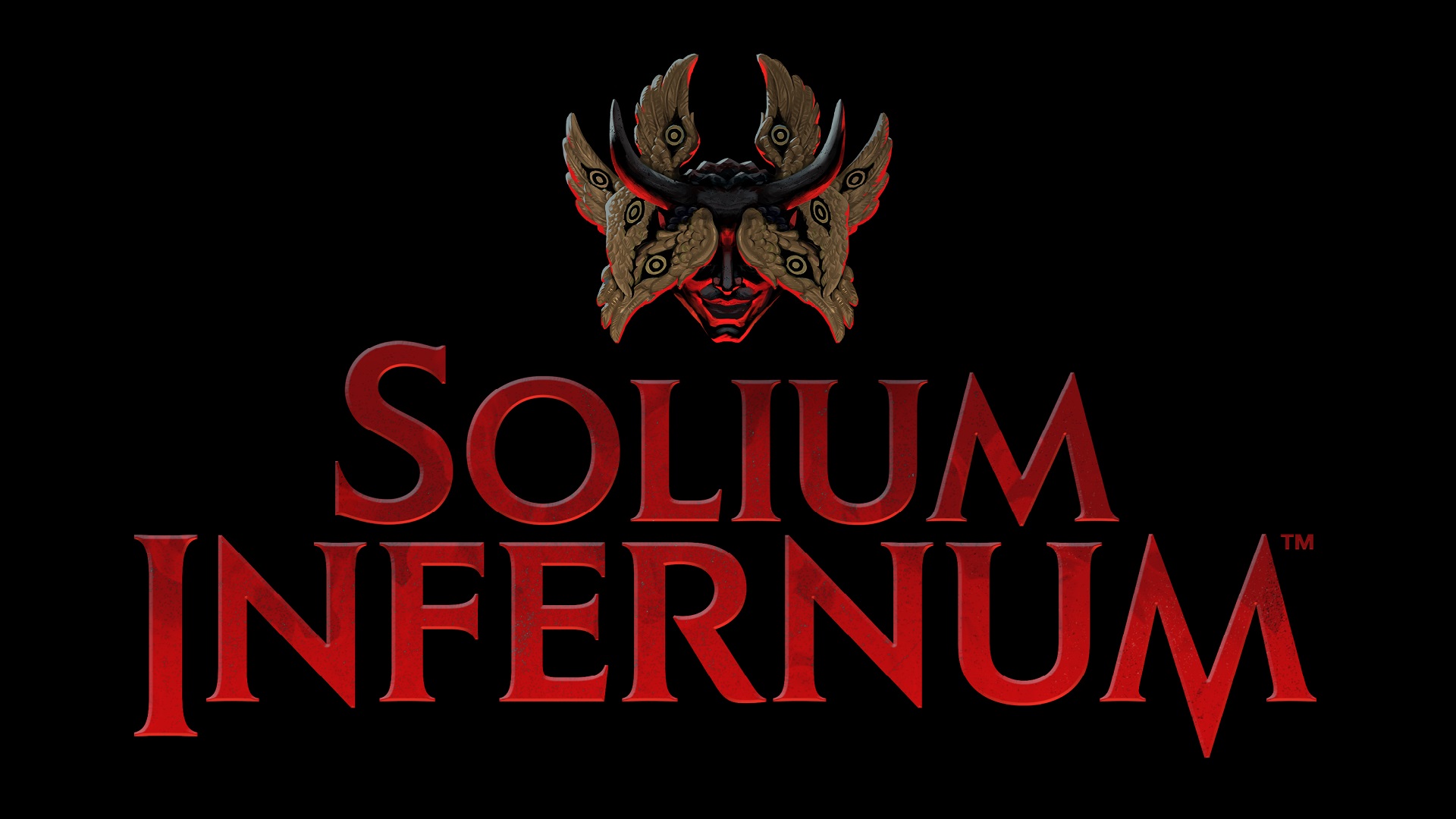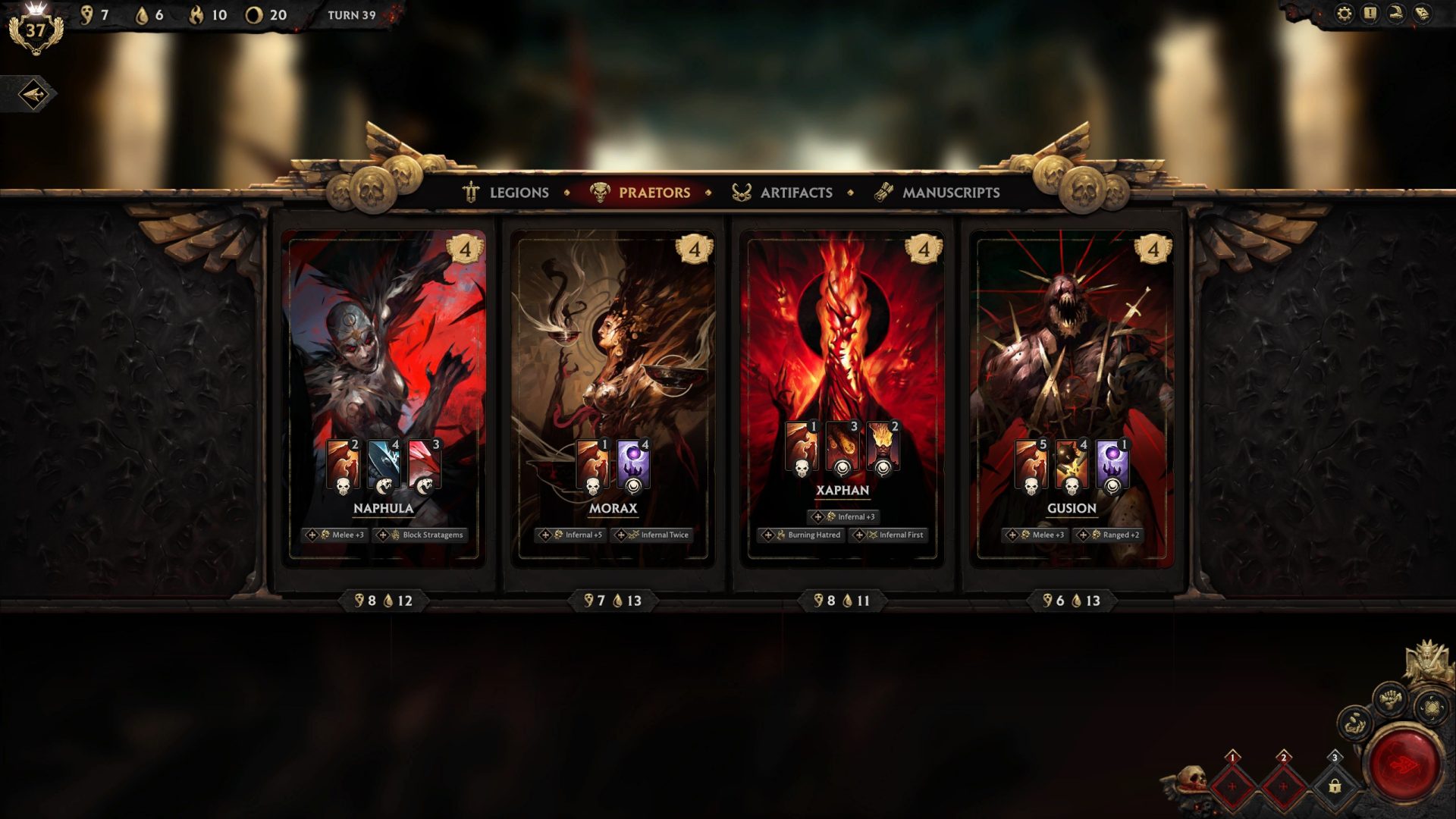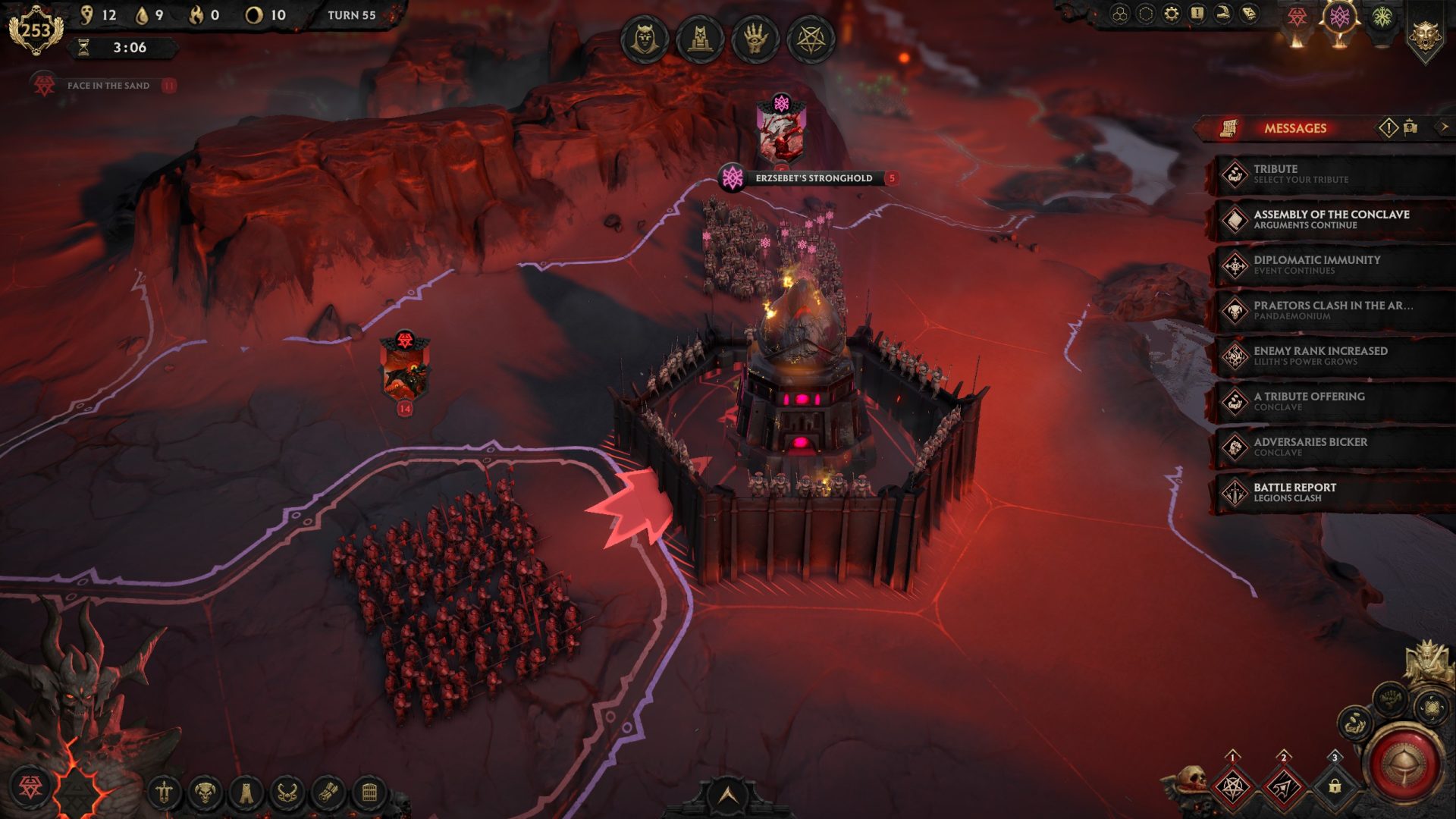Solium Infernum is a hard game to talk about, at least in nice terms. I don’t know what fuels those impish developers over at League of Geeks aside from a shot of Melbourne’s morning finest, but I’m sure they have it with a side of players’ misery and dashed hopes. A grand strategy game that looks like an infernal analogue to Civilization at first glance, any further mechanical comparisons to the 4X genre become unwieldy. The focus here is on diplomacy and scheming, with none of the colony building, tech progression, or resource management that make those games so dauntingly system-rich. Instead, this Aussie reinterpretation of the 2009 game of hellish bureaucracy is focused on the constant social negotiation between players and gamifying their resulting contempt. A veritable abyss of bluffs and wit rather than spreadsheets of efficient build paths and economic management, Solium Infernum is an experience like no other, where the players that survive to tell its stories do so with a thousand-yard stare and a nervous disposition.
Hell is up for grabs as old mate Satan has abdicated his throne, and the council he has left behind must mediate the ambitions of the power-hungry archfiends circling this power vacuum in his absence. After choosing one of these eight archfiends to embody and a couple of potentially game-changing relics to give them some added asymmetry, players are dropped into one of the three maps in Hell with a single legion (army), a sanctuary (base), and a few cantons (tiles). From here, most archfiends will begin by being able to issue two orders per turn. A biting decision in such a devious sandpit that is initially ripe with potential. Do you take a risk on your turn by moving your legion and claiming cantons you may not be able to defend, cast rituals on your opponent that may not succeed, or attempt to recruit a praetor (army leader) in a blind auction at the bazaar that another player then outbids you for? The first time Solium Infernum slapped me across the face and then kicked my arse was when it exhibited all of the above to me within the initial 20 turns of my first online match. There are virtually no safe moves you can make, as your two orders can be negated or their results spirited away from your control by the conflicting orders of your opposing archfiends. When the turn ends and all the scheduled orders of each archfiend are executed, chaos ensues as players’ decisions collide with one another. The order of your orders becomes crucial to success, and the enemy of your enemy is quickly sure to just become yet another enemy.
The art assets are evocative, and the Bazaar proudly puts them on display
Yes, conceptually it’s quite a lot. I remained baffled as to how to navigate these soupy, interwoven systems until I had spent well over a dozen hours scrambling to get just one match where I thought I had a chance at securing victory by having the most prestige points. Every hour before then was spent screaming, crying, shitting, unable to sleep, fiending for a ciggie, and just generally hating my fucking life. Aside from the tutorial which was fine and introduced the game well, playing with a chance to win is something League of Geeks has left to hard labour in these molten trenches.
I have never played a strategy game so social, where information is king and victory is so often achieved by background scheming rather than area control domination or by simply spinning up a resource-efficiency engine to generate victory points. Bluffing and deception are both integral to virtually any system in this game, whether it be competing for armies and items in the bazaar auctions, trying to outmanoeuvre a wily weak opponent on the hex-based map, or simply threatening enemies to a duel when you know they have nobody to front up with. It’s relentless. Real sicko shit, especially when you see it played well. You might try and simply ask the conclave for money each turn. Another player from across the map can cast spells to then loot your vaults. Another time, you think you are left alone long enough to get some game-changing praetors and artifacts. Again, some mutt you’ve not seen for half the game casts a spell and takes them too. Then one day you have your Joker moment. You start sending demands to your neighbours while they’re mired in wars with several other players and you start to realise that yes, you can be a motherfucker too. It is not until you adjust your mentality to finding underhanded opportunities beneath the turn-based strategy layer that this game finally clicks.
Going to eliminate the leading archfiend on the final turn. Soz Boz.
Welcome to the coldest war to ever grace Hell. Borders change every turn, micro-skirmishes rarely endure for more than a half-dozen turns, and feuding foes are constantly confronted with their sunk costs before shaking hands and considering subterfuge instead. No other game does diplomacy quite as fast-paced and confrontational as this, and if you like to have a minute to catch your breath and work on laying your foundations, this probably ain’t for you.
Solium Infernum’s reliance on opaque systems of diplomatic conflict gives way to rich social play. Indeed, this game is tailored to online play, emphasising asynchronous sessions so you can have multiple games occurring simultaneously. Unfortunately, this has left the developer in an impossible situation when it comes to singleplayer. You cannot send a bot a message that convincingly urges them to accept your gross demands. They cannot be convincingly bluffed by you insulting them into a vendetta they can’t possibly win. These are emotional plays, and no game has elicited such strong, vitriolic emotions in me since goddamn League of Legends. The idea of playing this game singleplayer is counterintuitive to the social systems that drive these conflicts, as the bots cannot exhibit the swings of hubris to supplication that come with big plays being foiled. Their mere existence is an imperfect solution to a title that desperately needs to onboard its players into something unique and wholly unlike its genre peers, but is unable to imitate the richness or learning that comes with multiplayer. I understand that it is probably a death sentence to launch a game like this without any singleplayer component, but outside of the heavily tailored challenge-mode-like experience in the Chronicles and the tutorial, there’s nothing in the solo modes here to properly initiate new players or keep them invested long enough to go through the tormenting initiation of online play.
A typical mid-game webbing diplomacy chart
Final Thoughts
Somebody needs to put those sickos at League of Geeks on a watchlist. They boldly advertised that they would put your friendships on shaky ground, and indeed I’m not even sure if I can view my mates the same way after this. Solium Infernum is a king-making game on steroids, where only the meanest motherfuckers will thrive and anybody lacking cruel, cold planning in the face of the unholy conclave will become little more than a serf for the landlords of Hell to use and abuse. For 90% of my games, I have been that pathetic pawn. Played best with as close to five human associates as you can muster (and preferably no loved ones), I would summarise Solium Infernum as being as riotous as it is relentless. Unless you throw yourself headfirst into this community or bring a full entourage, the bots will leave you mystified as to why this game deserved a revival. Now I need a cold shower, a cigarette, and a cry. Bravo, this is perhaps the most memorable strategy game I’ve ever played.
Reviewed on PC // Review code supplied by publisher
Click here for more information on WellPlayed’s review policy and ethics

- League of Geeks
- League of Geeks
- PC
- February 23, 2024




































